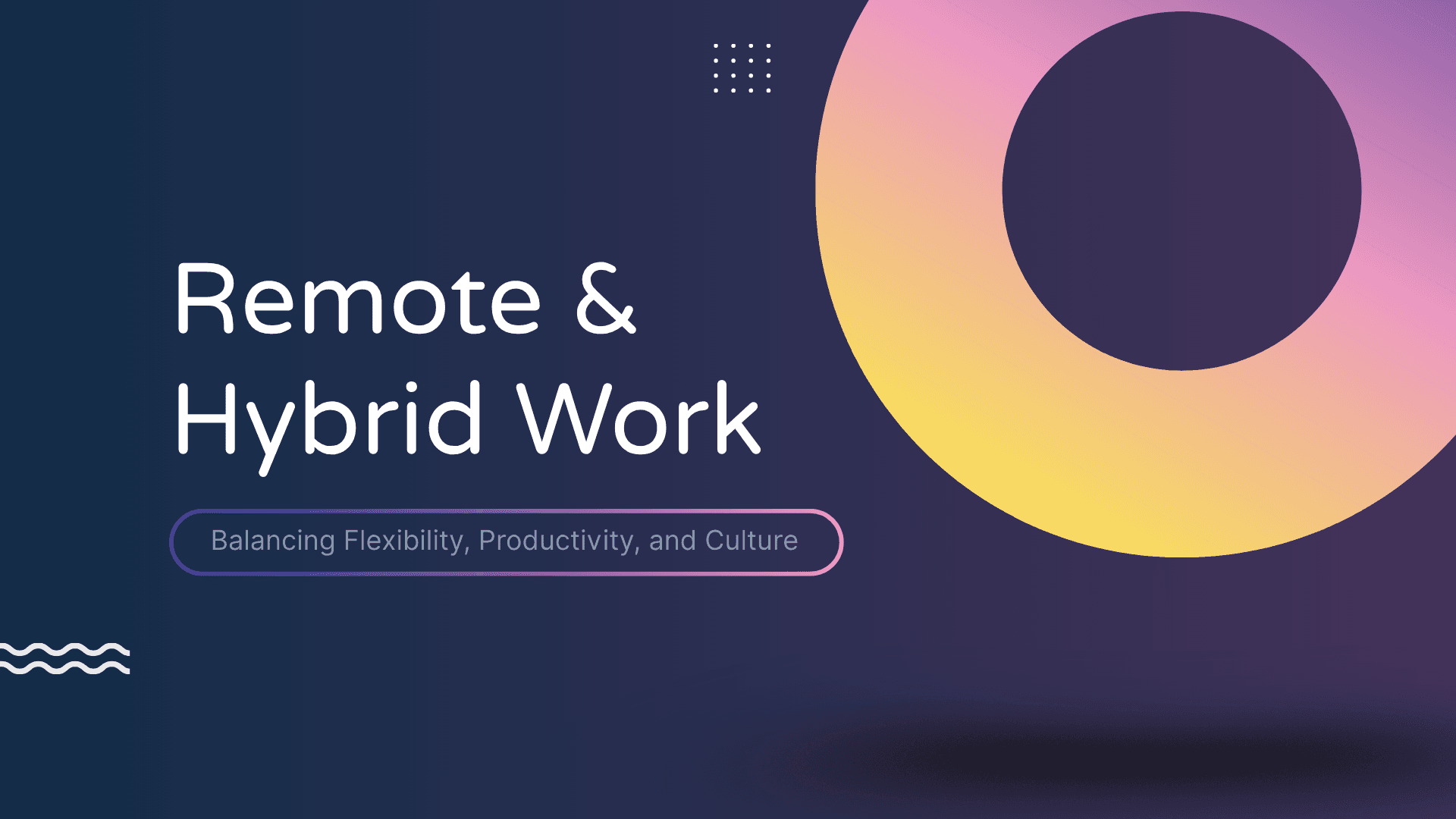The Future of Remote Talent Acquisition
The New Reality: Remote-First is Here to Stay
The pandemic forced a rapid shift to remote work, but what started as a necessity has evolved into a competitive advantage. Companies that master remote talent acquisition aren't just surviving—they're thriving by accessing global talent pools and building more diverse, flexible teams.
Yet, hiring for remote roles requires a fundamentally different approach than traditional in-person recruitment.
The Challenge: Beyond Location Independence
Remote hiring isn't just about posting "work from anywhere" on job descriptions. It's about identifying candidates who can thrive in distributed environments, building trust without face-to-face interactions, and creating onboarding experiences that integrate remote employees effectively.
Key challenges include:
- Assessing Remote Readiness: Not every great candidate will excel in a remote environment
- Cultural Fit in Digital Spaces: How do you evaluate someone's fit with company culture through video calls?
- Time Zone Coordination: Managing interview processes across multiple time zones
- Technical Assessment: Ensuring candidates can work effectively with digital tools and platforms

The Strategy: A Structured Approach to Remote Hiring
Successfully hiring remote talent requires reimagining every step of the recruitment process:
1. Redefining Job Requirements
Instead of focusing solely on technical skills, successful remote hiring emphasizes:
- Communication Skills: Clear, proactive communication becomes critical
- Self-Management: The ability to work independently and manage time effectively
- Digital Fluency: Comfort with collaboration tools and digital workflows
- Cultural Adaptability: Working effectively across different time zones and cultures
2. Virtual Interview Excellence
The interview process must be redesigned for digital environments:
- Structured Video Calls: Using consistent formats that reveal communication styles
- Asynchronous Assessments: Allowing candidates to showcase their work in their optimal environment
- Trial Projects: Short-term paid projects that simulate actual remote work conditions
- Team Integration: Including team members in the interview process through virtual coffee chats
3. Onboarding for Connection
Remote onboarding requires intentional design to create meaningful connections:
- Digital Welcome Packages: Shipping company swag and equipment before day one
- Structured Check-ins: Regular touchpoints during the first 90 days
- Virtual Mentorship: Pairing new hires with experienced remote team members
- Cultural Immersion: Creative ways to share company culture and values digitally
The Results: Building High-Performance Distributed Teams
Companies that master remote talent acquisition see measurable benefits:
- Access to Global Talent: No longer limited by geographic constraints
- Improved Diversity: Remote hiring naturally expands the candidate pool
- Cost Efficiency: Reduced real estate and relocation costs
- Employee Satisfaction: Higher retention rates among remote workers who were hired thoughtfully
Looking Forward: The Evolution Continues
Remote talent acquisition will continue evolving with new technologies and changing workforce expectations. The companies that win will be those that view remote hiring not as a compromise, but as an opportunity to build stronger, more diverse, and more resilient teams.
The future belongs to organizations that can identify and develop talent regardless of location—and the recruitment strategies that make this possible are being written today.
Related Posts
Building Employee experience is an art
From chaotic queues to seamless automation—how we built an system that made work effortless and efficient
Transforming HR with Data-Driven Decision Making
How modern HR teams are leveraging analytics to make smarter hiring and retention decisions
Talent Acquisition is the Face of a Company!
How TA professionals shape first impressions, solve business problems, and become the bridge between talent and strategy
